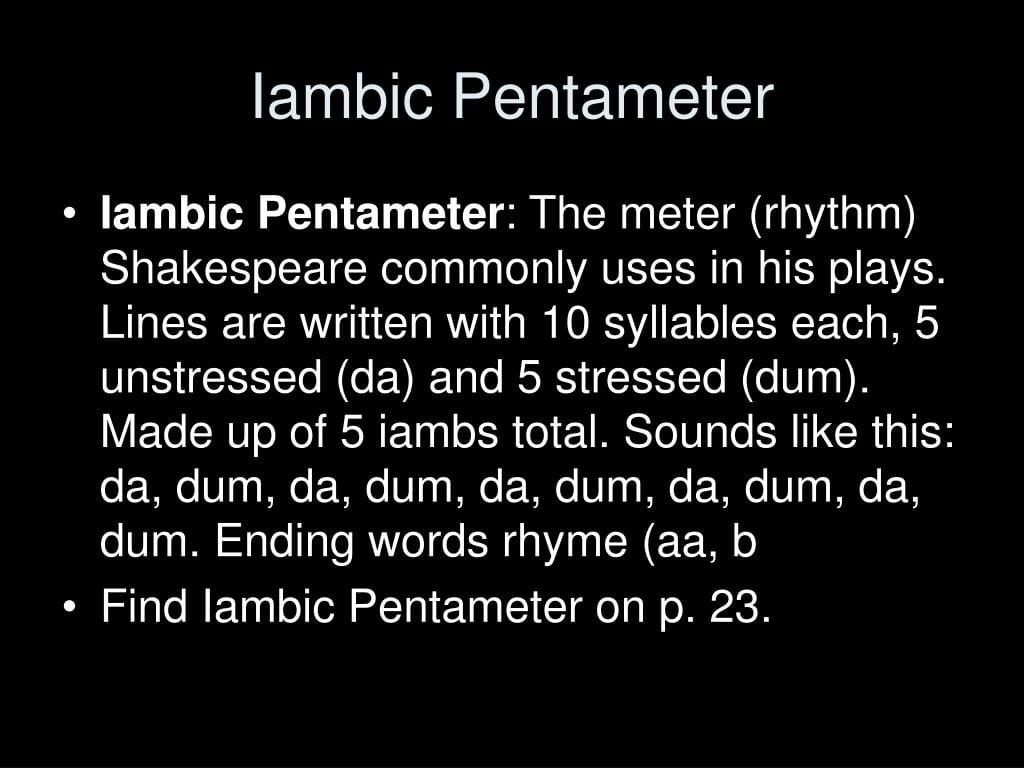Step into the captivating world of iambic pentameter, a poetic rhythm that has shaped verse for centuries. This guide unlocks its secrets, exploring manual scansion, iambic pentameter checkers, and the nuances of poetic rhythm. [https://www.lolaapp.com/in-the-bleak-midwinter-lyrics]
Demystifying Iambic Pentameter
Iambic pentameter, a cornerstone of traditional English poetry, can initially seem complex, but it’s readily grasped with the right approach. Think of it as the poem’s heartbeat: a pattern of stressed and unstressed syllables creating rhythmic flow. Each “iamb” is a pair of syllables (da-DUM), and “pentameter” signifies five iambs per line, totaling ten syllables. This flow is often key to a poem’s musicality and impact. Iambic pentameter checkers can simplify analysis and even aid in writing poetry.
Using Iambic Pentameter Checkers
These digital tools offer a streamlined way to analyze meter:
- Input: Paste the line of poetry into the checker.
- Analyze: Click “Check.” The checker scans the line, identifying the metrical pattern.
- Interpret: The checker reveals whether the line conforms to iambic pentameter, often providing details like syllable count and stress patterns.
Benefits:
- Efficiency: Automates analysis, saving time.
- Precision: Algorithms often surpass manual scanning in accuracy, especially for beginners.
- Learning Tool: Provides immediate feedback, reinforcing pattern recognition.
Understanding Rhythmic Variety
Iambic pentameter is one of many poetic meters. Others, like trochaic trimeter (DUM-da, DUM-da, DUM-da), exist, and understanding these variations enhances appreciation for a poet’s rhythmic choices.
Tips for Effective Checker Use:
- Credibility: Select checkers from reputable sources (poetry experts or educational platforms).
- Context: Remember that meter is just one aspect of a poem. Consider meaning, imagery, and tone for a complete understanding.
- Balance: Use checkers as learning aids, not replacements for developing your own analytical skills.
The Evolving Field of Poetics
Poetic analysis is a dynamic field. New theories and interpretations continuously emerge, deepening our understanding of rhythm and meter. While checkers rely on established conventions, nuances and variations in poetic meter can lead to differing interpretations, even among experts.
Future of Poetic Analysis
Technological advancements suggest increasingly sophisticated tools incorporating AI to analyze subtle variations and artistic choices. Ongoing research promises deeper insights into the complexities of poetic rhythm.
Identifying Iambic Pentameter Manually
So, you’re exploring poetry and encounter “iambic pentameter.” Here’s a practical guide to recognizing it:
The Basics: Iambic pentameter is the rhythmic pulse (DUM-da) within a line, created by stressed and unstressed syllables. Five iambs per line constitute “pentameter.”
Methods:
- Listen: Read aloud, attending to the natural rise and fall of your voice. Do you perceive a DUM-da, DUM-da, DUM-da, DUM-da, DUM-da rhythm?
- Count: Iambic pentameter typically has ten syllables per line. Deviations exist, especially in older poetry, but ten is a good starting point.
- Mark: Use “/” for stressed and “x” for unstressed syllables (x / x / x / x / x /). This visualizes the pattern.
- Embrace Variations: Poets utilize variations like spondees (DUM-DUM) and trochees (da-DUM) for emphasis and effect. A line may not be perfectly “iambic” yet still intentionally employ the pattern.
- Use Checkers Wisely: Online checkers analyze lines and offer insights, but they are not infallible and may misinterpret complex language. Combine them with your own analysis.
Important Considerations:
- Poetic analysis is ongoing. Interpretations vary, and what one considers iambic pentameter another may question.
- Exploration and experimentation are key. Embrace the journey of discovery!
Analyzing Passages for Iambic Pentameter
Identifying iambic pentameter in a passage involves recognizing the da-DUM rhythm:
- Syllable Count: Read aloud, counting syllables. Ten syllables suggest potential iambic pentameter. Remember that pronunciation can differ in poetry.
- Stress Marking: Mark stressed (/) and unstressed (x) syllables. Example: “a-gain” (x /).
- Pattern Recognition: Does the marking resemble x / x / x / x / x /? This suggests iambic pentameter.
- Auditory Confirmation: Reading aloud clarifies stressed and unstressed syllables, revealing the natural rhythm.
- Acknowledge Variations: Poets use variations like trochees (DUM-da) for emphasis or extra unstressed syllables for a softer sound. Don’t expect perfect adherence to the pattern.
Ongoing Research and Perspectives:
While these steps are generally accepted, ongoing research explores nuances of rhythm and meter, and interpretations may vary. Poetic analysis can be subjective.
Conclusion:
Identifying iambic pentameter involves observation and practice. Appreciate the general flow and the poet’s deviations for artistic expression. Listen, feel the rhythm, and enjoy the musicality.
Identifying Iambs within Words
Here’s how to determine if a word fits the iambic pattern:
- Syllabification: Break the word into syllables. Examples: “to-day,” “de-light.” Dictionaries can help.
- Stress Detection: Pronounce each syllable, noting emphasized syllables (stressed) versus quieter ones (unstressed).
- Iambic Test: Does the word follow the unstressed-stressed (da-DUM) pattern?
Examples: “be-low,” “de-light,” “per-haps,” “to-day,” “a-lone.”
Key Considerations:
- Context Matters: Stress can shift based on surrounding words.
- Common Meter: Hymnals and ballads often alternate iambic tetrameter (four iambs) and iambic trimeter (three iambs).
- Ongoing Research: Poetic meter is complex, with ongoing research and scholarly debate.
Exploring Further:
Explore poems, listen to their flow, and deepen your understanding of iambic rhythm.
Key Points:
- Iambic pentameter: five iambs (unstressed/stressed syllable pairs) per line.
- Checkers: Tools analyzing lines for iambic pentameter.
- Usage: Input a line, receive pattern analysis.
- Benefits: Time-saving, accuracy, learning aid.
- Rhythmic Variety: Iambic pentameter is one of many meters (e.g., trochaic trimeter).
- Checker Tips: Choose reputable sources, consider context, balance with manual analysis.
- Poetic Analysis: An evolving field.
- Future Tools: Likely more sophisticated tools with AI.
- Manual Identification: Listen, count, mark stress, acknowledge variations, use checkers wisely.
- Passage Analysis: Syllable count, stress marking, pattern recognition, auditory confirmation, variations.
- Iamb Identification: Syllabification, stress detection, iambic test.
This expanded guide provides comprehensive information about iambic pentameter, from using digital tools to manual analysis. It acknowledges the evolving nature of poetic study and encourages readers to explore the nuances of rhythm and meter. Remember to sing along with us this winter season. [https://www.lolaapp.com/in-the-bleak-midwinter-lyrics]
- Discover Long Black Pepper: Flavor & Health Benefits - April 25, 2025
- Shocking Twists: The Grownup Review: Unreliable Narration - April 25, 2025
- A Quiet Place Book vs Movie: A Deep Dive - April 25, 2025

















1 thought on “Unlocking Iambic Pentameter: A Comprehensive Guide to Checkers, Scansion, and Mastering Poetic Rhythm”
Comments are closed.